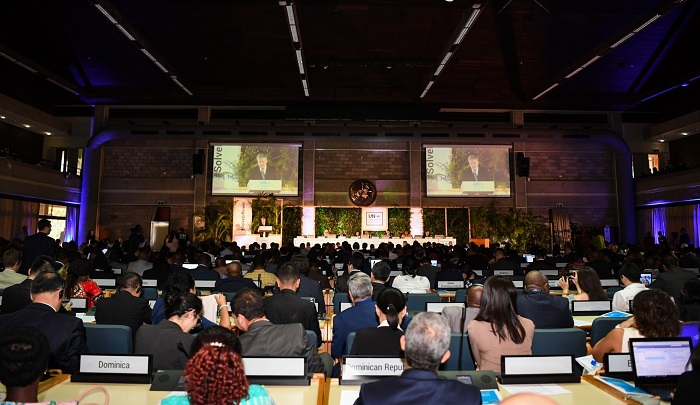
Nairobi, Resource extraction has more than tripled since 1970, including a five-fold increase in the use of non-metallic minerals and a 45 per cent increase in fossil fuel use, a UN Environment report said on Tuesday.
By 2060, global material use could double to 190 billion tonnes (from 92 billion), while greenhouse gas emissions could increase by 43 per cent, according to the Global Resources Outlook 2019 report.
The report released at the ongoing UN Environment Assembly said rapid growth in extraction of materials was the chief culprit in climate change and biodiversity loss — a challenge that will only worsen unless the world urgently undertakes a systemic reform of resource use.
By 2010, land-use changes caused a loss of global species of approximately 11 per cent, it said.
The document examined the trends in natural resources and their corresponding consumption patterns since the 1970s to support policymakers in strategic decision-making and transitioning to a sustainable economy.
Over the past five decades, the population has doubled and global domestic product increased four times.
The report found that, in the same period, annual global extraction of materials grew from 27 billion tonnes to 92 billion tonnes (by 2017). This will double again by 2060 on current trends.
“The extraction and processing of materials, fuels and food make up about half of total global greenhouse gas emissions and more than 90 per cent of biodiversity loss and water stress,” it said.
“The Global Resources Outlook shows that we are ploughing through this planet’s finite resources as if there is no tomorrow, causing climate change and biodiversity loss along the way,” said UN Environment Acting Executive Director Joyce Msyua.
“Frankly, there will be no tomorrow for many people unless we stop.”
Since 2000, growth in extraction rates accelerated to 3.2 per cent per annum, driven largely by major investments in infrastructure and higher material living standards in developing and transitioning countries, especially in Asia.
However, the wealthiest countries still needed 9.8 tonnes of materials per person in 2017, mobilised from elsewhere in the world, which was also driving this trend.
More specifically, the use of metal ores increased by 2.7 per cent annually and the associated impacts on human health and climate change doubled during 2000-2015.
Fossil fuel usage went from six billion tonnes in 1970 to 15 billion tonnes in 2017. Biomass increased from nine billion tonnes to 24 billion tonnes — mostly for food, feedstock and energy.
By using data from historical trends, the report projects into the year 2060.
From 2015-2060, natural resource use is expected to grow by 110 per cent, leading to a reduction of forests by over 10 per cent and a reduction of other habitats like grasslands by around 20 per cent.
The implications for climate change are severe as there would be an increase in greenhouse gas emissions of 43 per cent.








